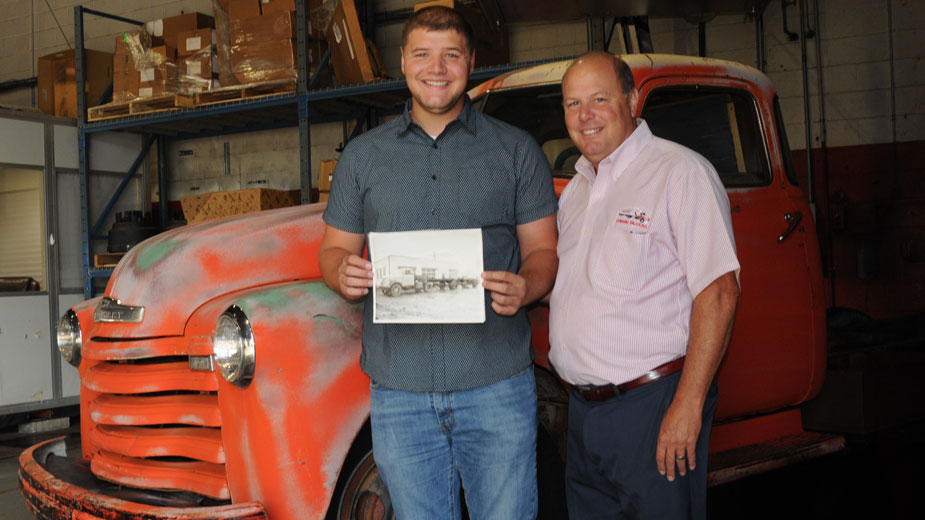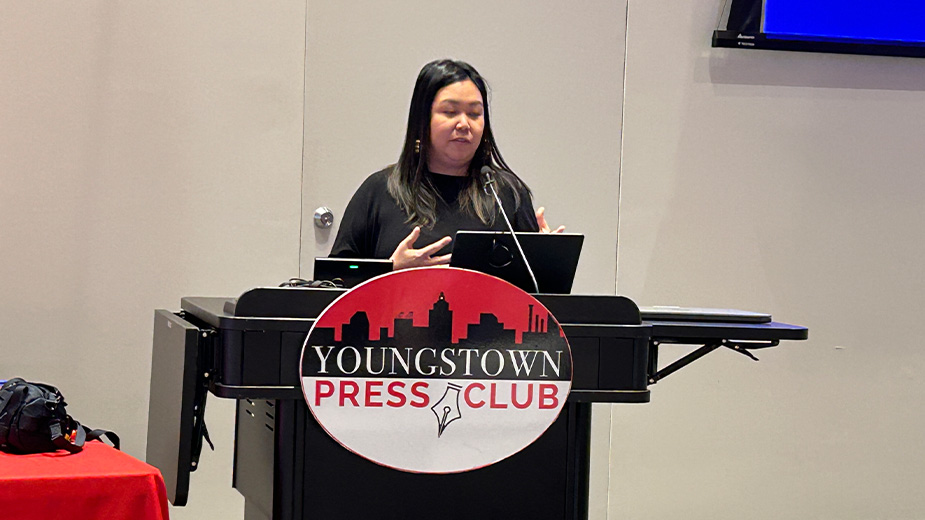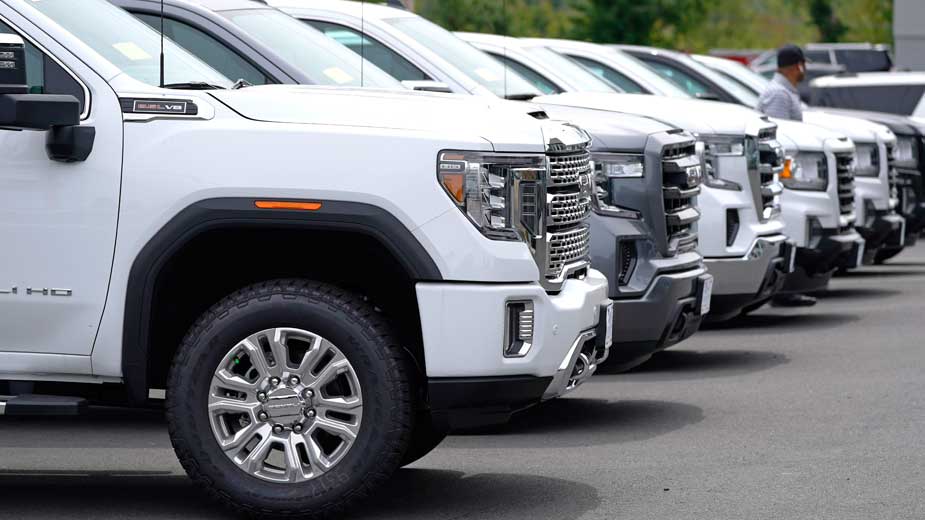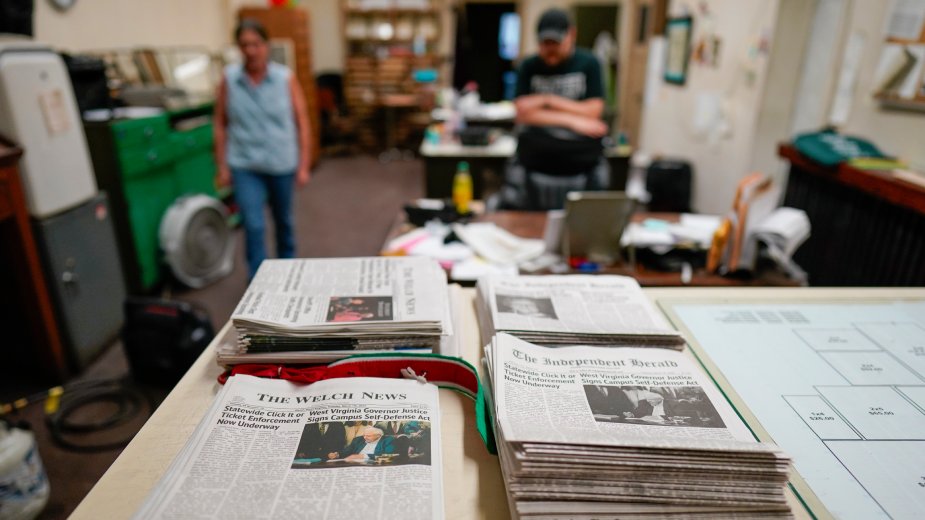No End to Shortage of Truck Drivers
YOUNGSTOWN, Ohio – A truck driver recently hired by Nick Strimbu Inc. asked the company’s president, Bill Strimbu, for a minute of his time.
The driver, one of 550 previously employed by the now-defunct Falcon Transport Co., wanted to thank Strimbu for the opportunity to work for his Brookfield trucking company.
“In all the years he worked at Falcon, he never met the owners,” Strimbu recalls.
The driver told Strimbu he was surprised at how his new employer embraced its drivers, meeting with them frequently and buying them lunch, Strimbu says. To an extent, that’s a necessity in an industry in which drivers are highly sought after. Drivers will often get their feet wet at Strimbu Inc. before moving onto another job, he says.
The driver is one of a half dozen that joined Strimbu after Falcon ceased operations in April.
“We didn’t pick up a whole lot,” Strimbu says. “They are being heavily solicited.”
In Ohio, about 18,500 trucking companies compete for that pool of workers, according to the Ohio Trucking Association. The industry employed 299,060 in 2018, or one in 15 jobs in the state.
Strimbu has 120 trucks in its fleet – it purchased 32 over the past year – and about as many drivers.
“We don’t have any open trucks right now,” Strimbu says. “We’re very blessed and fortunate to be in that situation. It hasn’t always been that way.”
About 60% of Strimbu Inc.’s business is transporting refrigerated goods, with the remainder in flatbed and specialized hauling. Business now is “pretty good,” he says. “It’s not as robust as it was last year at this time, but we are extremely busy.”
Truck drivers need to meet company requirements. That means a clean driving record and remaining drug- and alcohol-free. Failing a random drug test results in an immediate discharge. “If someone has a blemish, we don’t take a chance on them,” Strimbu says. “We want to be good stewards of our drivers and for the motoring public.”
The shortage of drivers is a common problem nationwide for the trucking industry, says Scott Fleming, co-president of Aim Transportation Solutions, Girard. That shortage also serves to increase wages, he reports.
Total trucking industry wages paid in Ohio in 2016 exceeded $13.9 billion, with an average annual trucking industry salary of $46,374, according to the U.S. Bureau of Labor Statistics.
“Everyone in our industry struggles finding good, hardworking individuals,” Fleming says.
And the shortage is only going to get worse. Numbers from the American Trucking Association indicate that U.S. trucking companies today need some 60,000 drivers, and that number could surpass 100,000 in a few years.
Big Blue Trucking in Warren has changed its pay structure so it isn’t experiencing the turnover rate it did previously, says recruiter Terri Richmond.
“It was bad two years ago but it seems to have gotten a lot better,” she says. “It’s dramatically decreased.”
Big Blue employs 48 drivers and operates a local fleet that transports furnace coke to Cleveland, as well as a regional fleet that operates east of the Mississippi River.
“Because there are so few people left in trucking, you have to pay really well,” Richmond says.
Many factors contribute to that shortage, including some potential drivers not being able to pass a drug test and others simply not showing up for work.
Aim, which divides its business into third-party logistics and truck leasing operations, has 250 employees locally and about 1,200 nationwide, Fleming reports.
Employment for both segments is about equal, with the logistics segment seeing most of the company’s growth, while the leasing business generates about two times as much revenue.
“Right now we continue to grow,” Fleming says. “We’re growing, not only locally but nationally.”
Like Strimbu Inc., Aim picked up a few former Falcon drivers, but company officials were surprised to find there weren’t as many local drivers for Falcon as they had believed.
“We did pick up some drivers who have worked out and we’ll continue to recruit,” Fleming says.
To thank its current drivers and attract new ones, Aim will host a driver appreciation family picnic Sept. 14, from noon to 4 p.m. at its Belmont Avenue headquarters. Aim will also host picnics that day for its drivers in Chicago, Gainesville, Ga., and Pittsburgh.
Just about every trucking company here and nationwide is coping with the scarcity of drivers. Dart Trucking Co. may be an exception.
Dart has 60 trucks in its fleet and operates from four terminals, including its headquarters in North Lima, that deliver to 48 states. The company hauls carbon for Calgon Carbon Corp. for water filtration, says recruiter Shelly Kroesen.
Kroesen says she hasn’t lost a driver in months. In fact, she recently rehired the driver who had most recently left Dart.
“I love rehires. I do it on a regular basis,” Kroesen says.
When drivers leave, most of the time they are back in one of her trucks before too long, she continues. They make great money – nearly $80,000 a year – and are allowed to personalize their rigs. “You get a little more one-on-one treatment when you’re with a smaller company,” she says.
Although about half of her staff came from Falcon at some point, the Dart recruiter says many of that company’s drivers were students or just too young.
“I can’t hire a student. I can’t hire somebody under 23 years old. I need cream-of-the-crop drivers,” she says. Even some who have the right amount of experience lack credentials such as tanker endorsements.
Another major issue facing Ohio trucking companies is the increase in the state gasoline tax that took effect earlier this year. Beginning July 1, the price for diesel went up 19 cents per gallon.
“It wasn’t expected, it wasn’t budgeted for and the market is soft enough we have to absorb the expense,” Strimbu says. He estimates the cost of the increase at “a couple hundred thousand dollars.”
Strimbu says his company is working on initiatives to address the increase, including adjustments to idling times and limiting the use of toll roads.
“Fortunately, on the lease side, customers pay for that,” Aim’s Fleming notes. On the integrated logistics side, however, the softness of the market makes passing along the added cost difficult, he says.
Health care and insurance costs have gone up, Fleming adds. Settlements for some lawsuits coming through the court system have been up to $80 million, he reports, which raises liability premiums.
Pictured: Flatbed trucks comprised the fleet of Nick Strimbu Inc. in the 1930s. Harrison Strimbu, director of marketing, holds a picture as he and President Bill Strimbu stand in front of one of the old trucks.
Copyright 2024 The Business Journal, Youngstown, Ohio.



